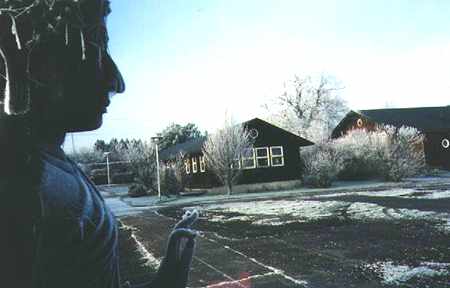|

The standing Buddha, donated by the
Supreme Patriarch of Thailand,
looks over a winter scene surveying the two buildings and courtyard that
eventually gave way to the new Temple and cloister.
|
|
While there were, and will always be,
elements of physical work in the monastery, the spiritual work of the Sangha continued.
Ajahn Sumedho gave regular teachings and the
numbers interested in taking up the monastic life continued to grow. This resulted in
other monasteries being established: in Switzerland, Italy, New Zealand and, more
recently, California. |
![]()